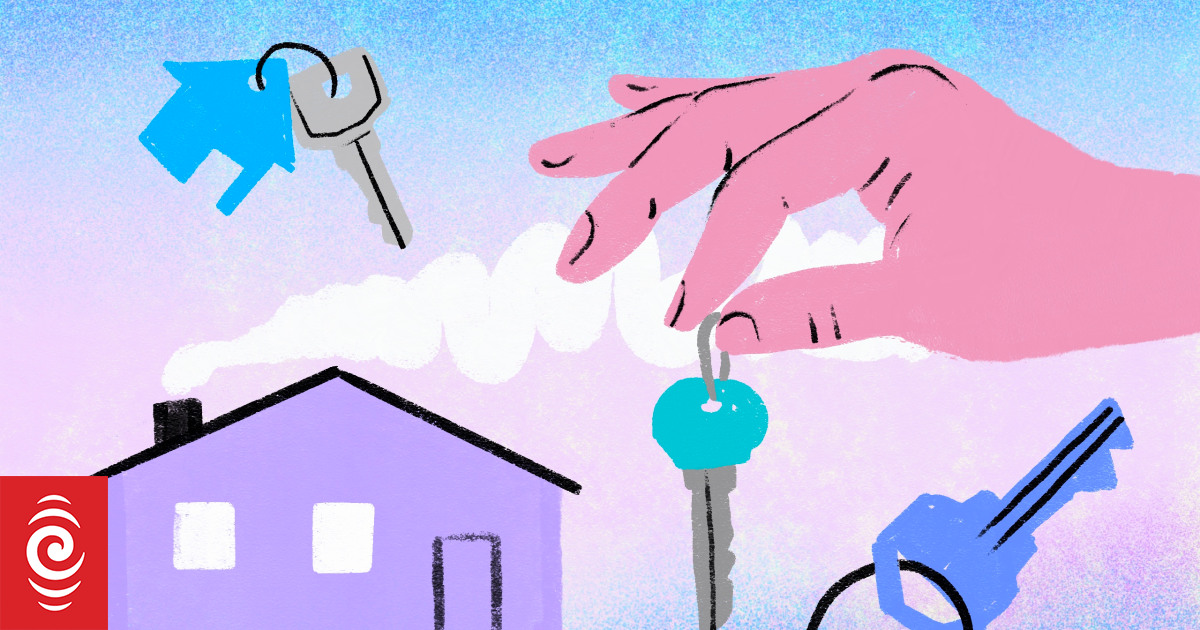Lower interest rates may be saving first-home buyers more than $480 a month.
Photo: RNZ
Lower interest rates may be saving first-home buyers more than $480 a month, and helping more people into the property market.
Cotality and Westpac have released their latest First-Home Buyer Report, which shows first-time buyers accounted for 27.7 percent of property purchases nationwide in the September quarter.
That is a record, up from a previous high of 26.9 percent in December.
In the wider Wellington region, they were responsible fort 36 percent of property purchases in the first nine months of the year. Rotorua was another area where they were strong, at 32 percent.
The data shows they are buying houses with smaller deposits. Westpac said the average loan-to-value ratio for first-home buyers was 79 percent, up from less than 75 percent three years ago.
Cotality New Zealand chief property economist Kelvin Davidson said there were a number of factors on first-home buyers’ side, including more houses for sale to choose from and easing loan-to-value rules.
Westpac senior economist Satish Ranchhod said falling interest rates had been a big help to allow people to enter the market sooner, with smaller deposits.
“It’s meaning the housing market is now a lot more affordable for New Zealanders looking to get their first home.
“We’ve seen a lift in lending to first home buyers, with activity now at its highest level in more than three years. Lower interest rates mean some FHBs won’t need to raise as much equity, given that the same cash outflow will now service a larger loan.
“Compared to this time last year, one-year fixed mortgage rates are nearly 150 basis points lower, while two-year fixed mortgage rates are around 250 basis points lower than in 2023.
“The fall in the one-year mortgage rate over the past year shaved around $485 off the average FHB’s monthly minimum mortgage payments. That’s a saving equivalent to 4 percent to 5 percent of the average first-home buyer’s monthly income, based on the median price of $700,000,” he said.
The average age of a first-home buyer has increased to 36, from about 34 pre-Covid.
First-home buyers had paid a median price so far this year of $700,000, just above the $695,000 paid last year.
They favoured standalone houses.
Davidson said a typical first-home buyer was not purchasing the cheapest properties in the market. The lower-quartile price across all buyers is $585,000.
They made up 35 percent of purchases in the cheapest 30 percent of the market. But activity was rising across all price brackets.
Ranchhod and Davidson said conditions should remain favourable for first-home buyers in the near term.
“House prices may well start to rise again in 2026 but the pace should not be so strong that first-home buyers fall behind,” Davidson said.
Ranchhod agreed their strength in the market should continue.
“We’re still expecting to see another reduction in the official cash rate from the Reserve Bank and importantly we’ve had big interest rate cuts over the past year and we haven’t seen the full impact yet. As that ripples through the economy and the jobs market that will support a pickup in the housing market including first-home buyers.”
Sign up for Money with Susan Edmunds, a weekly newsletter covering all the things that affect how we make, spend and invest money.

